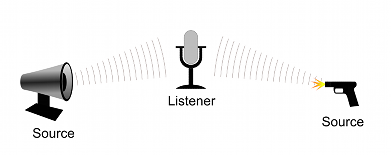An interactive application would be incomplete without some kind of audio, be it background music or sound effects. CHAI3D's audio classes incorporate the flexible and powerful OpenAL framework. CHAI3D currently support the WAV audio file format and has sophisticated features for playing sounds in 3D space associated with tools and material properties of objects.
In real life, sounds are emitted by objects and heard by listeners. The way a sound is perceived depends on a number of factors. A listener can tell roughly which direction a sound is coming from and may also get some sense of its distance from its loudness and quality. A fast-moving sound source (like a aircraft or a passing police car) will change in pitch as it moves as a result of the Doppler Effect.

To simulate the effects of position, CHAI3D requires sounds to originate from Audio Sources (cAudioSource ) attached to objects. The sounds emitted are then picked up by an Audio Listener (cAudioDevice ) attached to another object, most often the main camera. CHAI3D can then simulate the effects of a source's distance and position from the listener object and play them to the user accordingly. The relative speed of the source and listener objects can also be used to simulate the Doppler Effect for added realism.
The manual for OpenAL can be found in the CHAI3D documentation folder and gives more information about the many options and parameters available for getting effects just right.